A Sequential RFID System for Robust Communication with Underground Carbon Steel Pipes in Oil and Gas Applications
Abstract
:1. Introduction
1.1. Underground Communication Challenges
1.2. Communication Challenges Due to Magnetic Interference
1.3. Wireless/RFIDs for Pipelines
1.4. Commercial RFIDs for Pipelines
1.5. Overview of Proposed Design
1.6. Overview of RFID Communication
| Voc: Open Circuit voltage induced across tag coil due to current Ir in reader coil | |
| µ: Magnetic permeability of medium (air) | fc: Frequency of downlink transmission (105 kHz) |
| Nr: Number of turns in reader coil | Nt: Number of turns in tag coil |
| Ir: Current in reader coil (A) | At: Area of tag coil |
| rr: Radius of reader coil (m) | d: Distance between tag and reader (m) |
2. Sequential (SEQ) and FDX/HDX RFID System Designs
2.1. SEQ Tag Circuit System
2.2. FDX/HDX Tag Circuit System
2.3. RFID Reader
3. Theoretical Analysis
- ir: Current supplied by current amplifier
- Lr and Rr: Inductance and resistance of reader coil
- Zr: Total impedance of reader coil
- Cr: Series resonating cap for reader coil
- Vo: Reader voltage output
- M: Mutual inductance between reader and tag coils
- it: Tag current
- Lt and Rt: Inductance and resistance of tag coil
- Ct: Series resonating cap for reader coil
- m(t): Data modulation introduced in the tag current by the PIC toggling the switch
- ir: Current supplied by current amplifier
- Lr and Rr: Inductance and resistance of reader coil
- Zr Total impedance of reader coil
- Cr: Series resonating cap for reader coil
- Vo: Reader voltage output
- M: Mutual inductance between reader and tag coils
- it: Tag current
- Lt and Rt: Inductance and resistance of tag coil
- ΔLpipe and ΔRpipe: Changes in tag coil inductance and resistance due to pipe effects
- Ct: Series resonating cap for reader coil
- m(t): Data modulation introduced in the tag current by the PIC toggling the switch
4. Measurements of RFID FDX/HDX and SEQ Communication System on Carbon Steel Pipes
4.1. Test Comparison between FDX/HDX and SEQ RFID Uplink Data Transmission
4.2. Wireless Test Characterization of SEQ RFID System with Carbon Steel Pipe
- σ2signal: Signal variance σ2noise: Noise variance
- σ21: Binary ‘1’ variance σ20: Binary ‘0’ variance
5. Conclusions
6. Patents
Author Contributions
Funding
Conflicts of Interest
References
- Ryan, J.R.A. Pipelines in Canada—The Canadian Encyclopedia. 2019. Available online: https://www.thecanadianencyclopedia.ca/en/article/pipeline (accessed on 22 July 2019).
- NRCAN, Crude Oil Facts—Natural Resources Canada. Available online: https://www.nrcan.gc.ca/crude-oil-facts/20064 (accessed on 22 July 2019).
- Li, L.; Vuran, M.C.; Akyildiz, I.F. Characteristics of Underground Channel for Wireless Underground Sensor Networks. In Proceedings of the 6th Annual Mediterranean Ad Hoc Networking WorkShop, Corfu, Greece, 12–15 June 2007; pp. 92–99. [Google Scholar]
- Sun, Z.; Akyildiz, I.F. Magnetic Induction Communication for Wireless Underground Sensor Networks. IEEE Trans. Antennas Propag. 2014, 58, 2426–2435. [Google Scholar] [CrossRef]
- Curtis, J. Electromagnetic Power Attenuation in Soils Electromagnetic Power Attenuation in Soils. 2005. Available online: https://apps.dtic.mil/dtic/tr/fulltext/u2/a437109.pdf (accessed on 22 July 2019).
- Sandia National Laboratories. Measurement of Dielectric and Magnetic Properties of Soil. 1995. Available online: https://inis.iaea.org/collection/NCLCollectionStore/_Public/27/040/27040410.pdf (accessed on 22 July 2019).
- Magnetic Properties of Solids. Available online: http://hyperphysics.phy-astr.gsu.edu/hbase/Tables/magprop.html (accessed on 22 July 2019).
- Qing, X.; Chen, Z.N. Proximity Effects of Metallic Environments on High Frequency RFID Reader Antenna: Study and Applications. IEEE Trans. Antennas Propag. 2007, 55, 2882–2888. [Google Scholar] [CrossRef]
- Emmons, T.F. Radio Engineer’s Handbook, 1st ed.; McGraw Hill: New York, NY, USA, 1943. [Google Scholar]
- Sadiku, M.N. Elements of Electromagnetics, 6th ed.; Oxford University Press: New York, NY, USA, 2015. [Google Scholar]
- Sun, Z.; Wang, P.; Vuran, M.C.; Al-rodhaan, M.A.; Al-dhelaan, A.M.; Akyildiz, I.F. Ad Hoc Networks MISE-PIPE: Magnetic induction-based wireless sensor networks for underground pipeline monitoring. Ad Hoc Netw. 2011, 9, 218–227. [Google Scholar] [CrossRef]
- Sun, Z.; Akyildiz, I.F.; Kissele, S.; Member, S.; Gerstacker, W.; Member, S. Increasing the Capacity of Magnetic Induction Communications in RF-Challenged Environments. IEEE Trans. Commun. 2013, 61, 3943–3952. [Google Scholar] [CrossRef]
- Tan, X.; Sun, Z. An Optimal Leakage Detection Strategy for Underground Pipelines Using Magnetic Induction-Based Sensor Networks; Springer: Berlin-Heidelberg, Germany, 2013; Volume 7992, pp. 414–425. [Google Scholar]
- Lin, S.; Member, S.; Akyildiz, I.F.; Wang, P.; Sun, Z. Distributed Cross-Layer Protocol Design for Magnetic Induction Communication in Wireless Underground Sensor Networks. IEEE Trans. Wirel. Commun. 2015, 14, 4006–4019. [Google Scholar] [CrossRef]
- Sadeghioon, A.M.; Metje, N.; Chapman, D.N.; Anthony, C.J. SmartPipes: Smart Wireless Sensor Networks for Leak Detection in Water Pipelines. J. Sens. Actuator Netw. 2014, 3, 64–78. [Google Scholar] [CrossRef]
- Caffrey, C.M.; Häkli, J.; Hirvonen, M.; Huhtinen, I.; Nummila, K.; Lehikoinen, T. Magnetically Coupled Wireless Communication for Buried Environmental Sensor. In Proceedings of the IEEE 12th International Conference on Environment and Electrical Engineering, Wroclaw, Poland, 5–8 May 2013; pp. 1–6. [Google Scholar]
- Zarifi, M.H.; Deif, S.; Daneshmand, M. Wireless passive RFID sensor for pipeline integrity monitoring. Sens. Actuators A 2017, 261, 24–29. [Google Scholar] [CrossRef]
- 3M Locating and Marking System. Available online: https://multimedia.3m.com/mws/media/683617O/3m-locating-and-marking-system-product-bulletin-lr-pdf.pdf (accessed on 22 July 2019).
- Elydan. RFID Identification for Underground Utilities—Eliot Rfid Marker. Available online: https://www.rybbtp.fr/portfolio-item/eliot-rfid-markers/?lang=en (accessed on 22 July 2019).
- Finkenzeller, K.; Waddington, R. RFID Handbook; John Wiley and Sons: Chichester, UK, 2003. [Google Scholar]
- Lee, Y. Antenna Circuit Design for RFID Applications. 2003. Available online: http://ww1.microchip.com/downloads/en/appnotes/00710c.pdf (accessed on 22 July 2019).
- Microchip. dsPIC33/PIC24 Family Reference Manual. Available online: https://www.microchip.com/wwwproducts/en/PIC24F16KA101 (accessed on 22 July 2019).

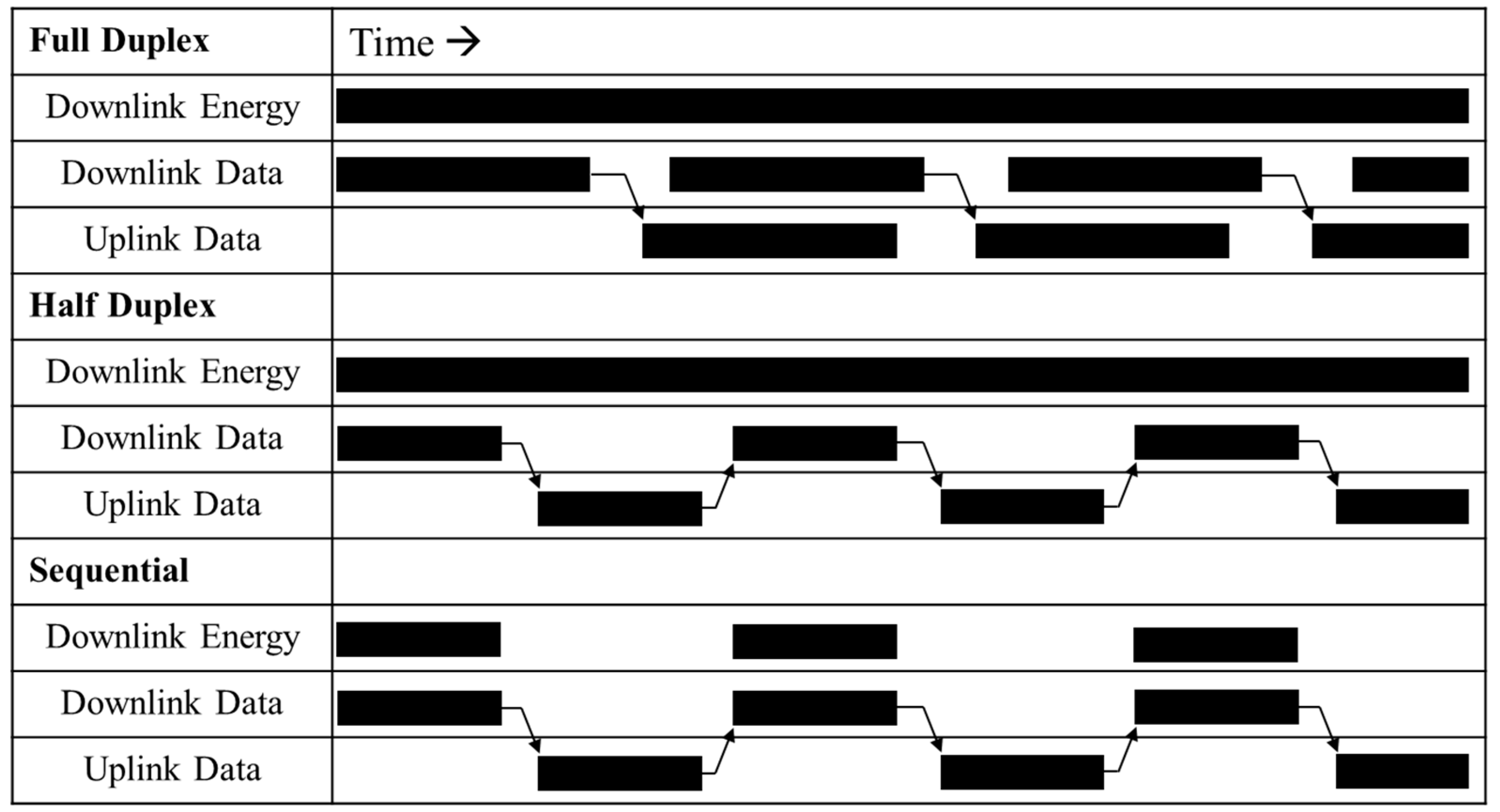


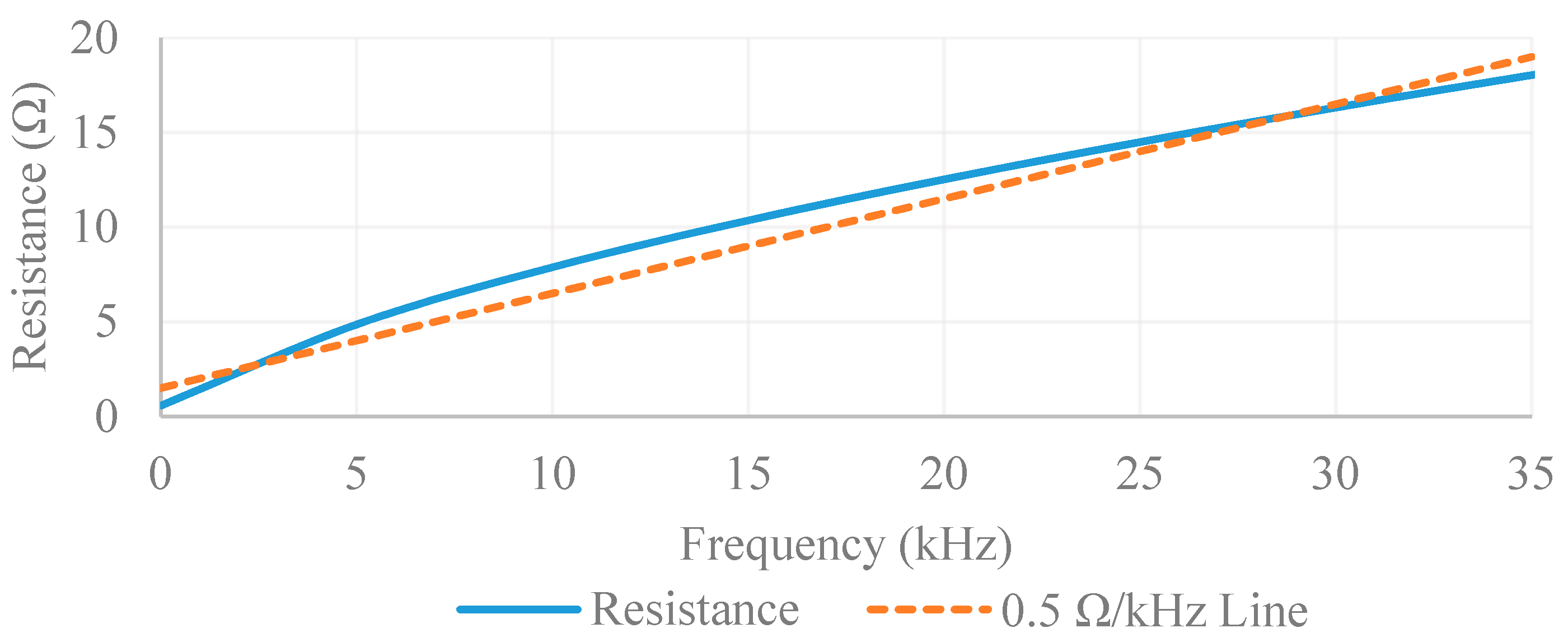
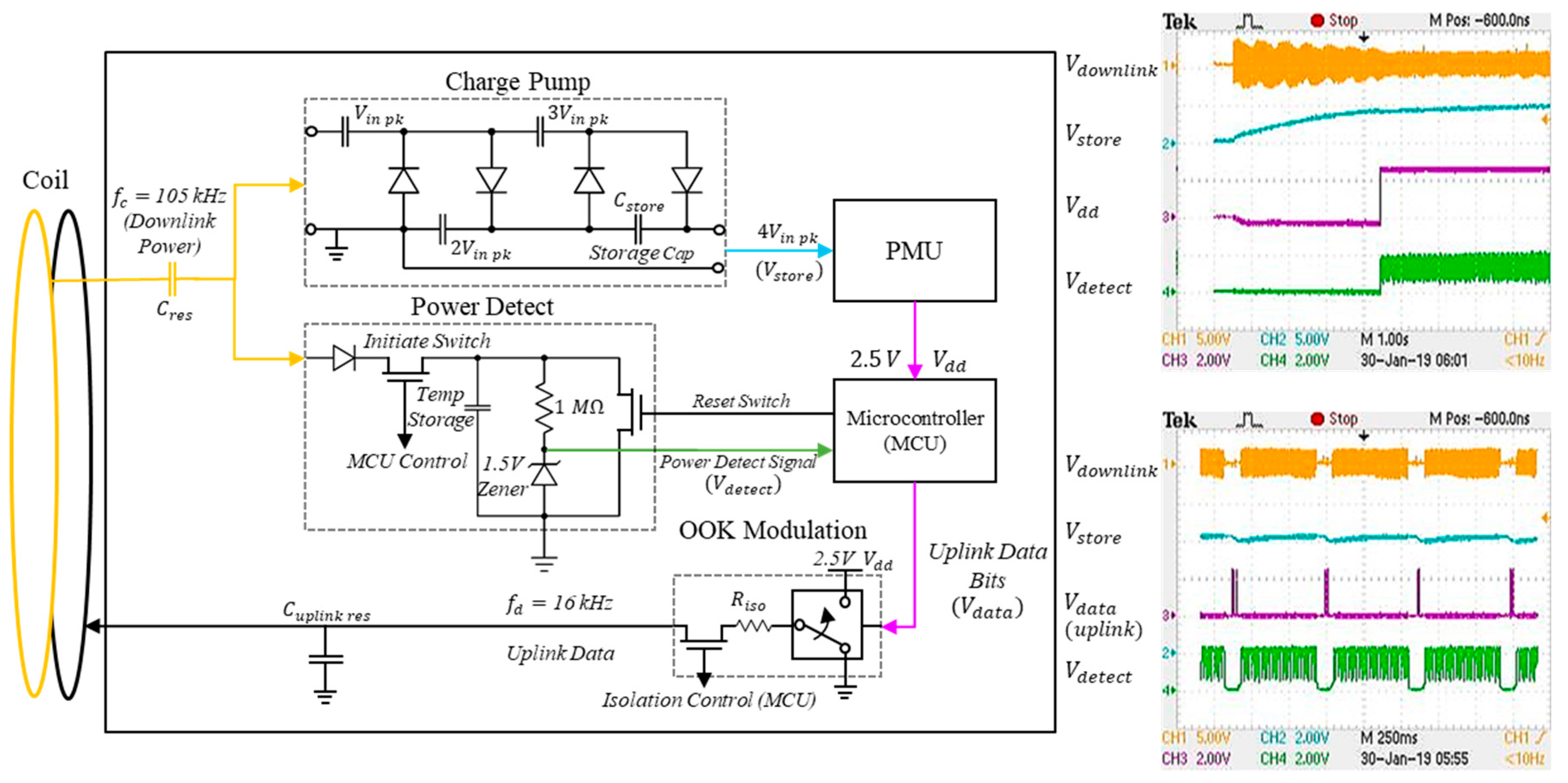



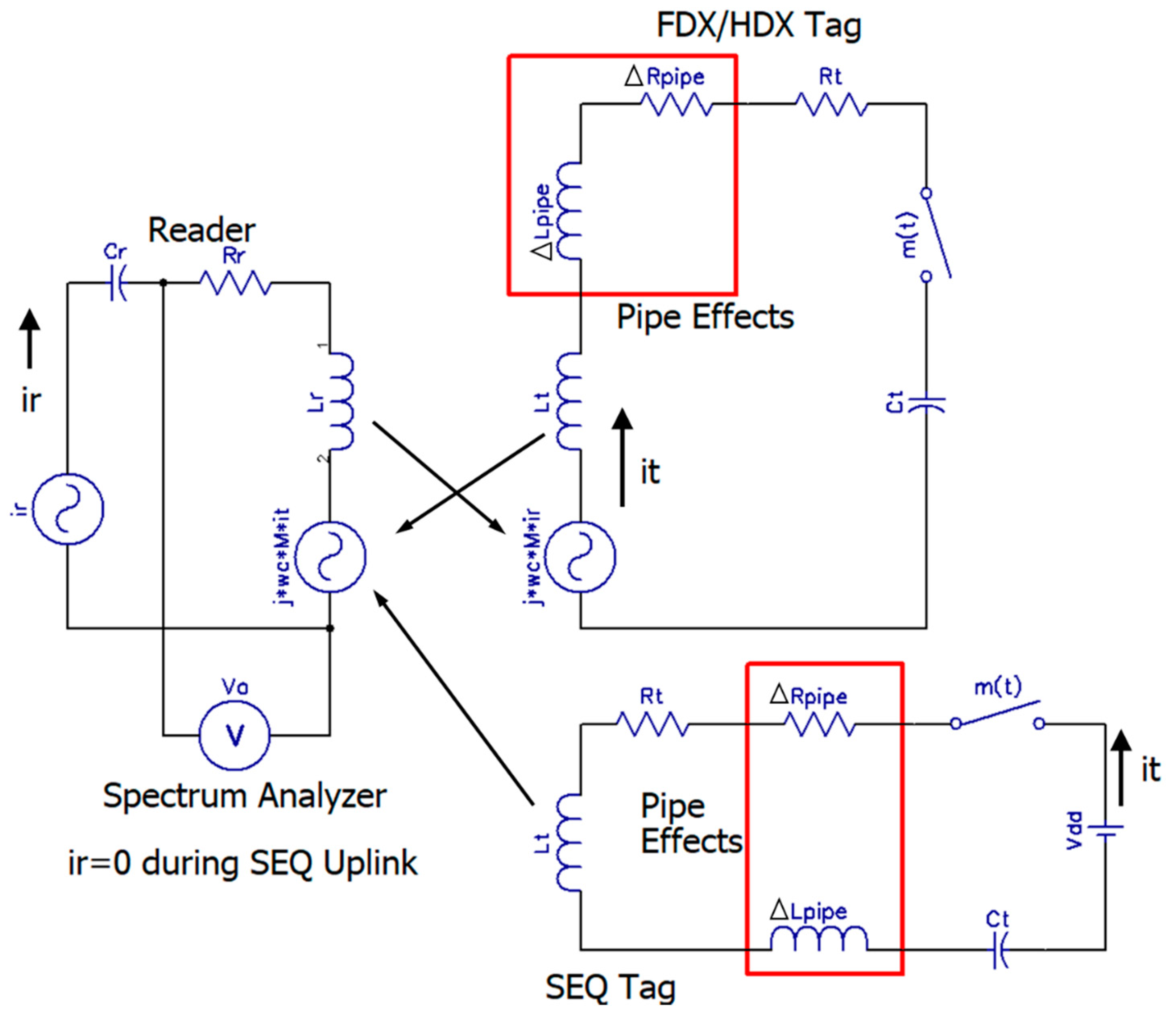

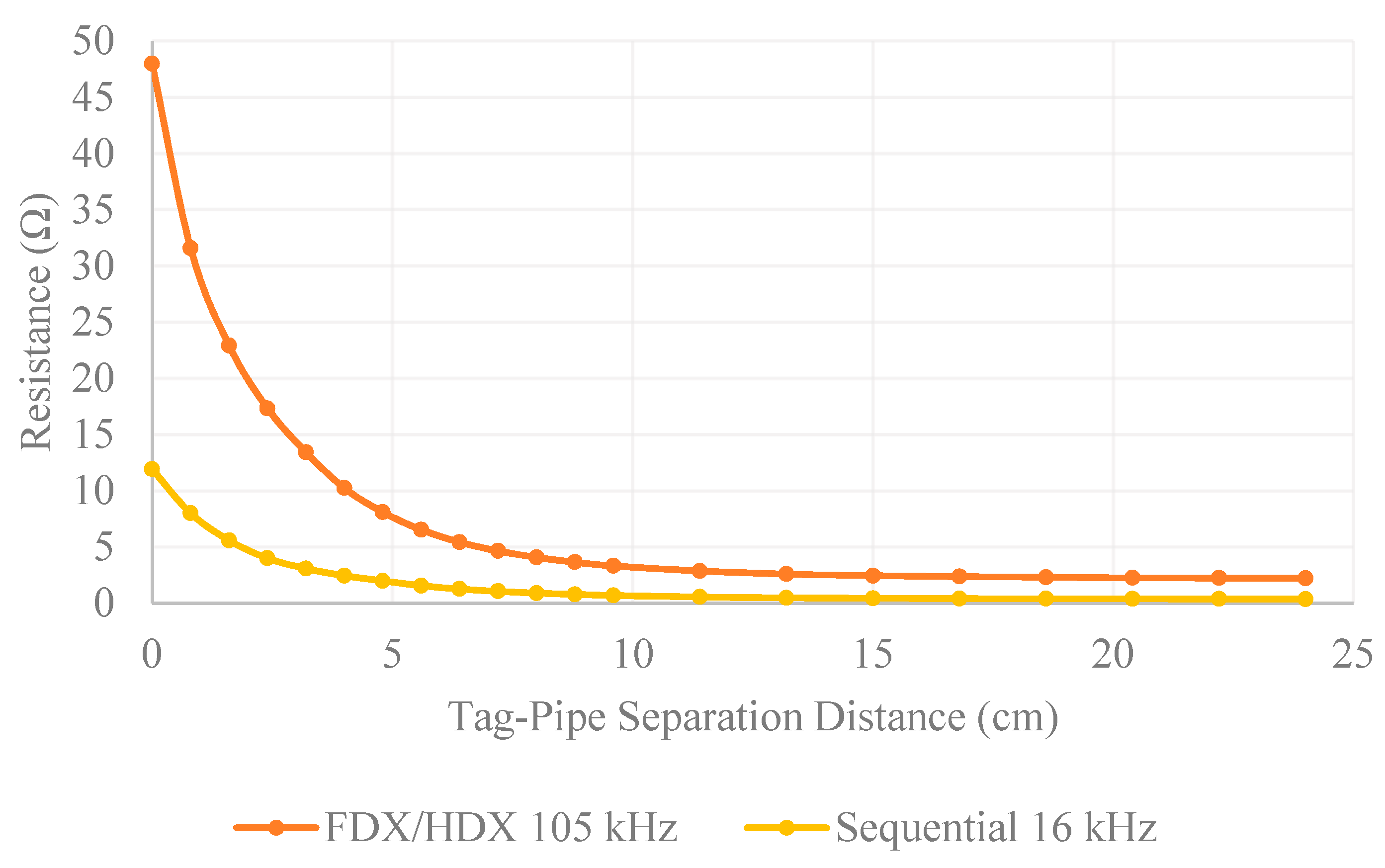
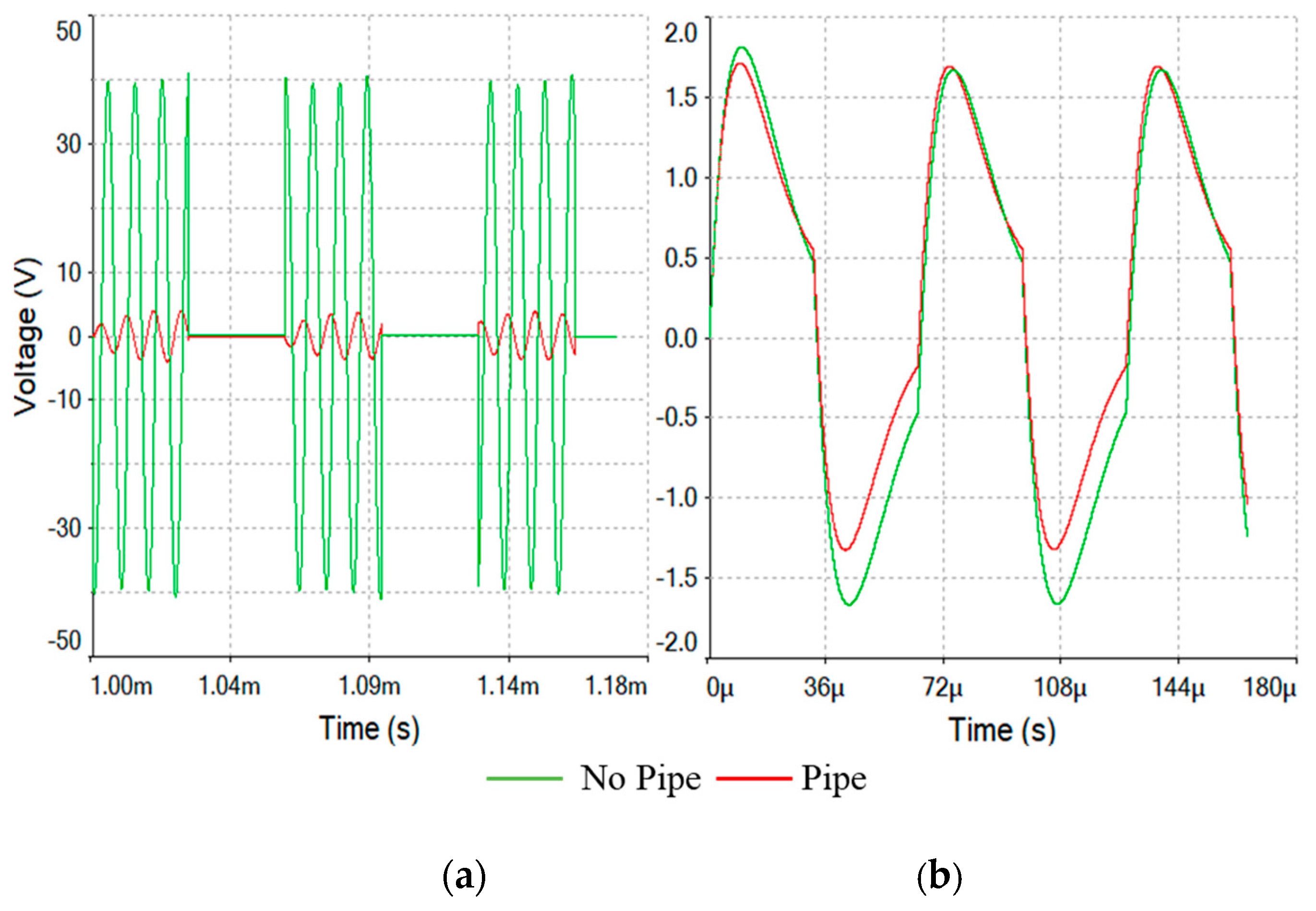

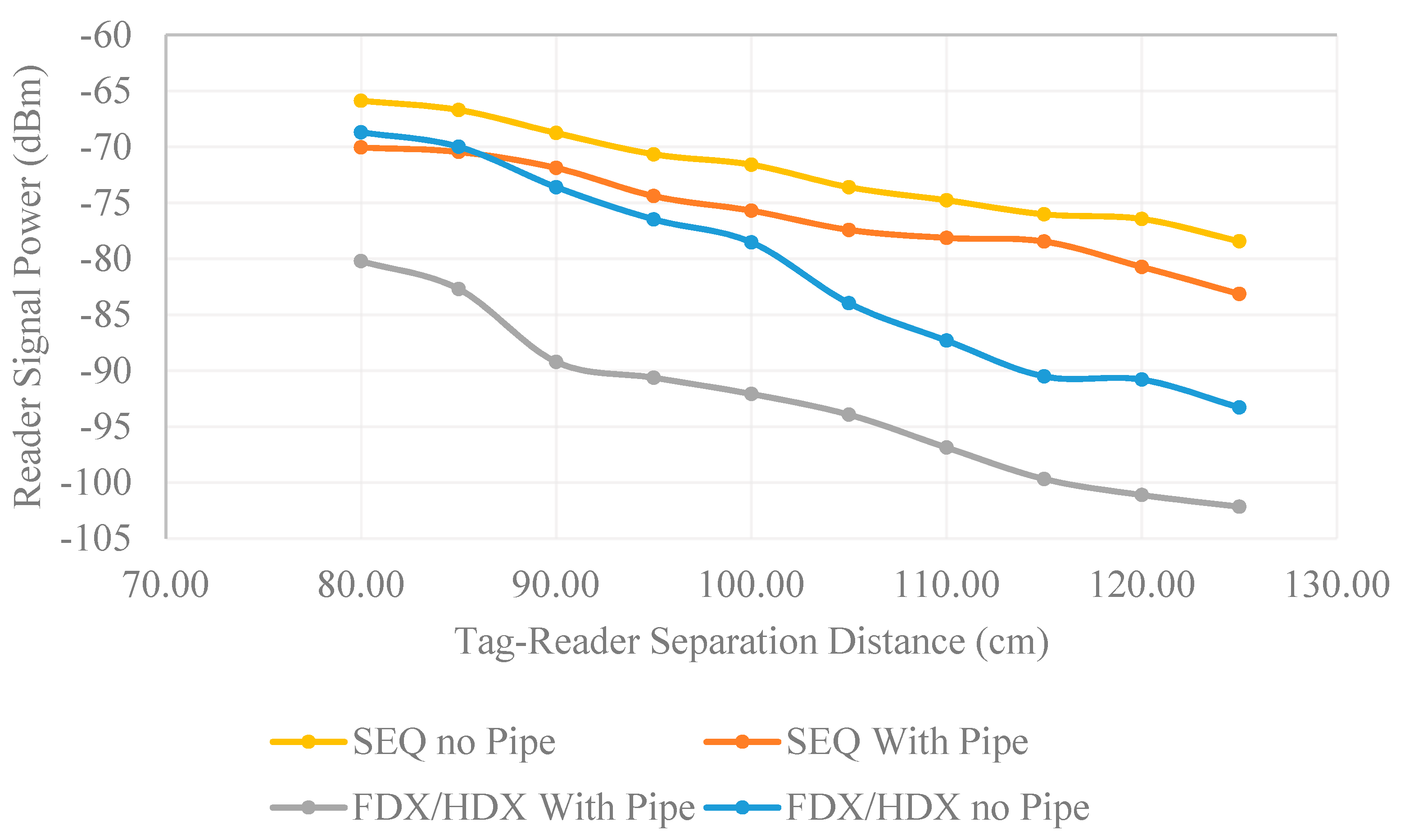


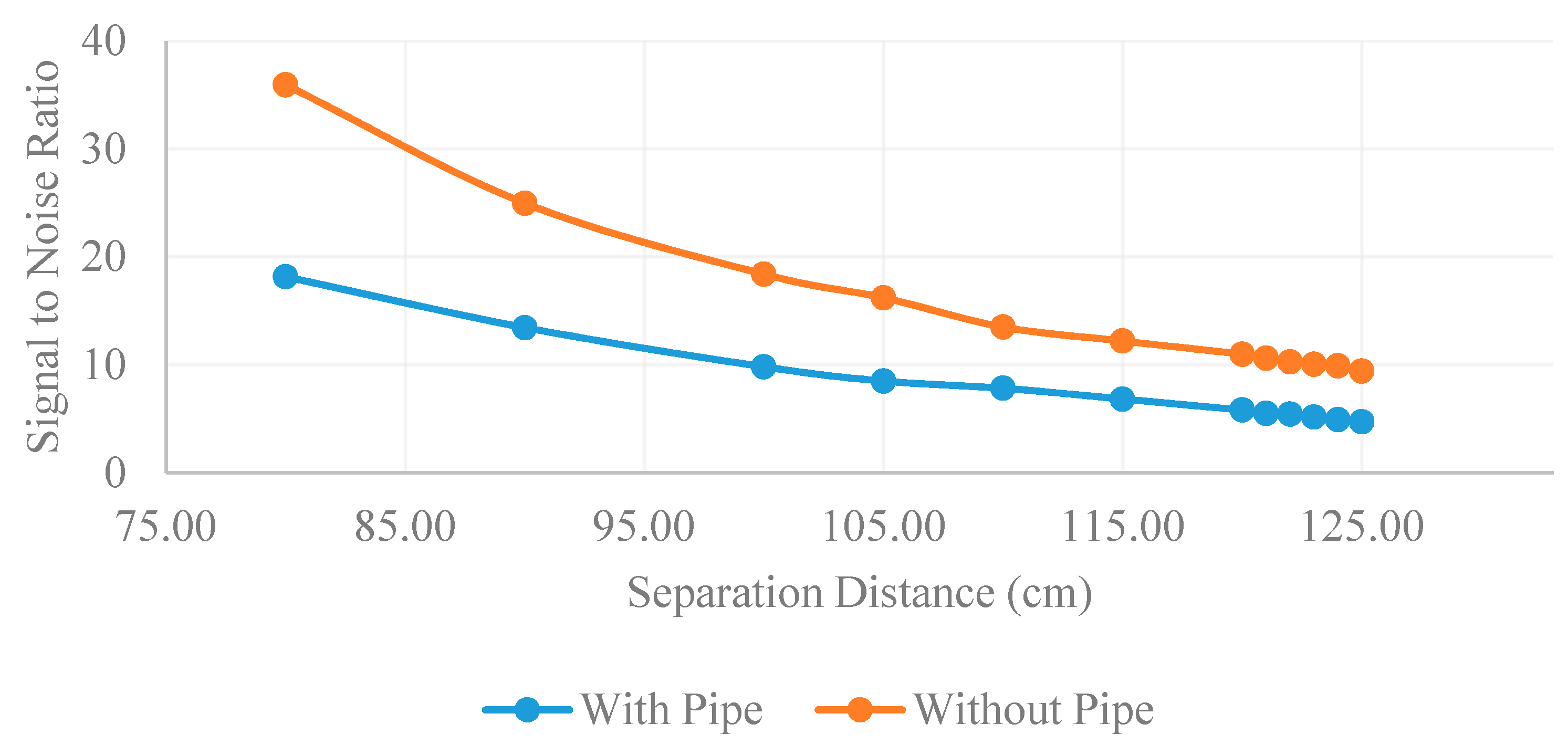
| Ref. | Freq. | Prototype | Communication | Battery | Function (Output Voltage) | Range | Works on Metal |
|---|---|---|---|---|---|---|---|
| [11] | 10 MHz | yes | Custom MI | no | Sensing | 10 m (theory) | yes |
| [15] | 433 MHz | no | HDX | yes | Sensing (2.5 V) | NM | no |
| [17] | 100 MHz | yes | FDX | no | Sensing (NA) | 1 cm | yes |
| [16] | 125 kHz | no | LF MI | yes | Sensing temp | 12 m | no |
| [18] | 0.6–200 kHz | no | Custom RFID | no | Marking (1 V) | 1.8 m | no |
| [19] | 13.5 MHz | yes | FDX | no | Marking (1 V) | 1.5 m | yes |
| This work | 105/16 kHz | yes | SEQ | no | Sensing (2.5 V) | 1.25 m | yes |
© 2019 by the authors. Licensee MDPI, Basel, Switzerland. This article is an open access article distributed under the terms and conditions of the Creative Commons Attribution (CC BY) license (http://creativecommons.org/licenses/by/4.0/).
Share and Cite
Vyas, R.; Tye, B. A Sequential RFID System for Robust Communication with Underground Carbon Steel Pipes in Oil and Gas Applications. Electronics 2019, 8, 1374. https://doi.org/10.3390/electronics8121374
Vyas R, Tye B. A Sequential RFID System for Robust Communication with Underground Carbon Steel Pipes in Oil and Gas Applications. Electronics. 2019; 8(12):1374. https://doi.org/10.3390/electronics8121374
Chicago/Turabian StyleVyas, Rushi, and Bailey Tye. 2019. "A Sequential RFID System for Robust Communication with Underground Carbon Steel Pipes in Oil and Gas Applications" Electronics 8, no. 12: 1374. https://doi.org/10.3390/electronics8121374




